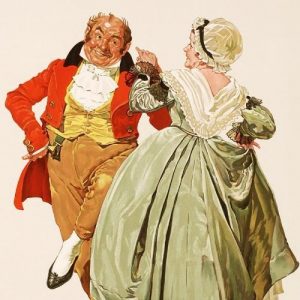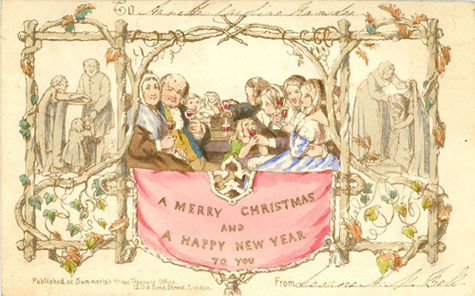ARCHIVAL MOMENT
December 23 – Tibb’s Eve
In many communities in Newfoundland– the name assigned to December 23 – has traditionally been Tibb’s Eve also known as Tipp’s Eve and more recently Tipsy Eve. It is the first official day of the Christmas Season.
There is uncertainty about the origins of the expression. Folklorists in Newfoundland generally agree that Tibb’s Eve was originally the old-fashioned way to say ‘never’, as in ‘a day that doesn’t exist’. In Newfoundland the expression was “it will be Tibb’s Eve before you get that done.” or “we’ll be at this from now to Tibb’s Eve”.
It might be argued that the expression is Irish. In 1796 Francis Grose, in his book ‘Classical Dictionary of the Vulgar Tongue,’ third ed. writes that Saint Tibb’s evening
” is an Irish expression, and means ” the evening of the last day, ” as in ” He will pay you on St. Tibb’s Eve.”
There’s an interview in the Folklore and Language Archives at Memorial University of Newfoundland with a man from a community in Placentia Bay, born in the early 1900s, who asks the student who’s interviewing him when she plans to get married.
“She answers, ‘Oh, probably never’ he winks his eye and says, ‘Oh, on Tibb’s Eve,’ and on the tape she has no idea what he’s talking about. For him, a joking way, but a normal way of something that’s not going to happen.
CONTEMPORARY EXPLANATION
The more contemporary explanation of St. Tibb’s comes from the association of the day with a Christmas tipple. In the 1500’s if you were to go out for a drink you went to a “tipple” or alehouse and were served by a “tippler” the alehouse keeper. In Newfoundland – St. Tibb’s became – the first real occasion to taste the home brew, a day where the men would visit each other’s homes for a taste.
In 1868 the Catholic bishop of Newfoundland was so appalled that the extent of “habit of tippling” or buying drinks for friends – that he became a determined opponent. In the early 1900’s one of his successors established the Anti Treating League encouraging men to pledge themselves “not to take from anyone a drink of intoxicating liquor in a place where such liquors are sold.”
The League was not a great success.
Merry Christmas
If you are tippling on Tibb’s Eve – No Driving !!











